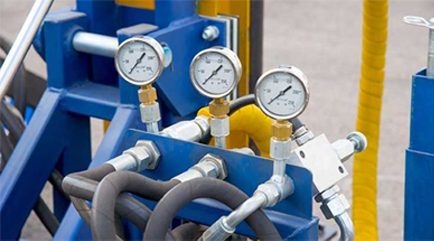ISO (the International Organization for Standardization) is a worldwide federation of national standards bodies (ISO member bodies). The work of preparing International Standards is normally carried out through ISO technical committees. Each member body interested in a subject for which a technical committee has been established has the right to be represented on that committee. International organizations, governmental and non-governmental, in liaison with ISO, also take part in the work. ISO collaborates closely with the International Electrotechnical Commission (IEC) on all matters of electrotechnical standardization.
International Standards are drafted in accordance with the rules given in the ISO/IEC Directives, Part 2.
The main task of technical committees is to prepare International Standards. Draft International Standards adopted by the technical committees are circulated to the member bodies for voting. Publication as an International Standard requires approval by at least 75 % of the member bodies casting a vote.
Attention is drawn to the possibility that some of the elements of this document may be the subject of patent rights. ISO shall not be held responsible for identifying any or all such patent rights.
ISO 19013-1 was prepared by Technical Committee ISO/TC 45,
Rubber and rubber products, Subcommittee SC 1,
Hoses (rubber and plastics).
ISO 19013 consists of the following parts, under the general title
Rubber hoses and tubing for fuel circuits for internal combustion engines — Specification:
-
— Part 1: Diesel fuels
-
— Part 2: Gasoline fuels
WARNING — Persons using this part of ISO 19013 should be familiar with normal laboratory practice. This part of ISO 19013 does not purport to address all of the safety problems, if any, associated with its use. It is the responsibility of the user to establish appropriate safety and health practices and to ensure compliance with any national regulatory conditions.
1 Scope
This part of
ISO 19013 specifies the requirements for rubber tubing and hoses used in diesel fuel circuits for internal combustion engines. The diesel fuels covered include “bio-diesels” which consist of the methyl ester of rape seed oil at levels up to 20 % by volume in conventional diesel fuels. In addition, this specification may also be applied as a classification system to enable original equipment manufacturers (OEMs) to detail a “line call-out” of tests for specific applications where these are not covered by the main types specified (see example in
Annex E). In this case, the hose or tubing would not carry any marking showing the number of this part of
ISO 19013 but may detail the OEM's own identification markings as shown on their part drawings.
2 Normative references
The following referenced documents are indispensable for the application of this document. For dated references, only the edition cited applies. For undated references, the latest edition of the referenced document (including any amendments) applies.
- ISO 188, Rubber, vulcanized or thermoplastic — Accelerated ageing and heat resistance tests
- ISO 1402, Rubber and plastics hoses and hose assemblies — Hydrostatic testing
- ISO 1629, Rubber and latices — Nomenclature
- ISO 1746, Rubber or plastics hoses and tubing — Bending tests
- ISO 1817, Rubber, vulcanized — Determination of the effect of liquids
- ISO 3302-1, Rubber — Tolerances for products — Part 1: Dimensional tolerances
- ISO 4671, Rubber and plastics hoses and hose assemblies — Methods of measurement of dimensions
- ISO 4672:1997, Rubber and plastics hoses — Sub-ambient temperature flexibility tests
- ISO 4926, Road vehicles — Hydraulic brake systems — Non-petroleum base reference fluids
- ISO 6133, Rubber and plastics — Analysis of multi-peak traces obtained in determinations of tear strength and adhesion strength
- ISO 7233:1991, Rubber and plastics hoses and hose assemblies — Determination of suction resistance
- ISO 7326:1991, Rubber and plastics hoses — Assessment of ozone resistance under static conditions
- ISO 8031, Rubber and plastics hoses and hose assemblies — Determination of electrical resistance
- ISO 8033, Rubber and plastics hoses — Determination of adhesion between components
- ISO 23529, Rubber — General procedures for preparing and conditioning test pieces for physical test methods
- SAE J2027, Standard for Protective Covers for Gasoline Fuel Line Tubing
- SAE J2044:2002, Quick Connect Coupling Specification for Liquid Fuel and Vapor/Emissions Systems
- SAE J2260, Nonmetallic Fuel System Tubing with One or More Layers
- EN 14214, Automotive fuels — Fatty acid methyl esters (FAME) for diesel engines — Requirements and test methods
ISO (the International Organization for Standardization) is a worldwide federation of national standards bodies (ISO member bodies). The work of preparing International Standards is normally carried out through ISO technical committees. Each member body interested in a subject for which a technical committee has been established has the right to be represented on that committee. International organizations, governmental and non-governmental, in liaison with ISO, also take part in the work. ISO collaborates closely with the International Electrotechnical Commission (IEC) on all matters of electrotechnical standardization.
The procedures used to develop this document and those intended for its further maintenance are described in the ISO/IEC Directives, Part 1. In particular the different approval criteria needed for the different types of ISO documents should be noted. This document was drafted in accordance with the editorial rules of the ISO/IEC Directives, Part 2 (see
www.iso.org/directives).
Attention is drawn to the possibility that some of the elements of this document may be the subject of patent rights. ISO shall not be held responsible for identifying any or all such patent rights. Details of any patent rights identified during the development of the document will be in the Introduction and/or on the ISO list of patent declarations received (see
www.iso.org/patents).
Any trade name used in this document is information given for the convenience of users and does not constitute an endorsement.
For an explanation on the meaning of ISO specific terms and expressions related to conformity assessment, as well as information about ISO's adherence to the World Trade Organization (WTO) principles in the Technical Barriers to Trade (TBT) see the following URL:
www.iso.org/iso/foreword.html.
The committee responsible for this document is ISO/TC 45, Rubber and rubber products, Subcommittee SC 1, Rubber and plastics hoses and hose assemblies.
This sixth edition cancels and replaces the fifth edition (
ISO 2398:2006), which has been technically revised with the following main changes.
-
-
— New clauses (
Clause 8,
Clause 9 and
Clause 10) describing frequency of testing, routine tests, type tests and production acceptance tests have been added.
-
— Clause 8 has been renumbered as
Clause 11; a), b), f) and the example have been amended.
-
— Annex A and
Annex B have been introduced in accordance with ISO/TC 45/SC 1 Guide 976 — Rev 7:2013.
-
— Clause 10, describing a test report or certificate supplied on request of the purchaser, has been added.
WARNING Persons using this document should be familiar with normal laboratory practice. This document does not purport to address all of the safety problems, if any, associated with its use. It is the responsibility of the user to establish appropriate health and safety practices and to ensure compliance with any national regulatory conditions.
1 Scope
This document specifies the requirements for three types, three classes and two categories of textile-reinforced rubber hose for compressed air, up to a maximum working pressure of 25 bar with an operating-temperature range of −40 °C to +70 °C, depending on the type and category.
2 Normative references
The following documents are referred to in the text in such a way that some or all of their content constitutes requirements of this document. For dated references, only the edition cited applies. For undated references, the latest edition of the referenced document (including any amendments) applies.
- ISO 37, Rubber, vulcanized or thermoplastic — Determination of tensile stress-strain properties
- ISO 188, Rubber, vulcanized or thermoplastic — Accelerated ageing and heat resistance tests
- ISO 1307, Rubber and plastics hoses — Hose sizes, minimum and maximum inside diameters, and tolerances on cut-to-length hoses
- ISO 1402, Rubber and plastics hoses and hose assemblies — Hydrostatic testing
- ISO 1817:2015, Rubber, vulcanized or thermoplastic — Determination of the effect of liquids
- ISO 4671, Rubber and plastics hoses and hose assemblies — Methods of measurement of the dimensions of hoses and the lengths of hose assemblies
- ISO 7326:2006, Rubber and plastics hoses — Assessment of ozone resistance under static conditions
- ISO 8033, Rubber and plastics hoses — Determination of adhesion between components
- ISO 10619-1, Rubber and plastics hoses and tubing — Measurement of flexibility and stiffness — Part 1: Bending tests at ambient temperature
- ISO 10619-2:2011, Rubber and plastics hoses and tubing — Measurement of flexibility and stiffness — Part 2: Bending tests at sub-ambient temperatures
3 Terms and definitions
For the purposes of this document, the terms and definitions given in
ISO 8330 apply.
ISO and IEC maintain terminological databases for use in standardization at the following addresses:

